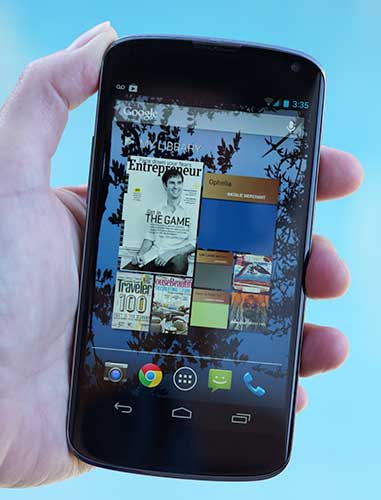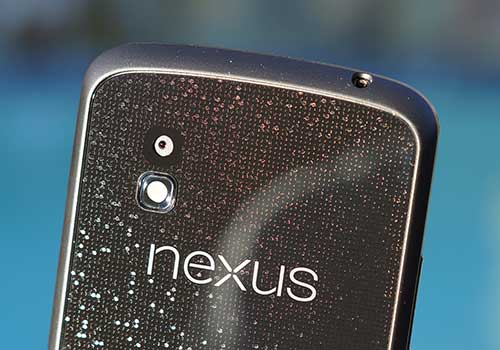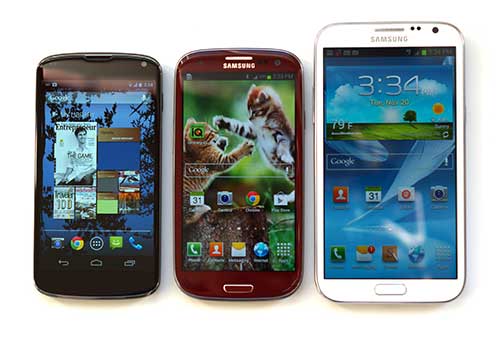Google Nexus 4 Review
11:51
The
Google Nexus 4 Android smartphone hardly needs and introduction. It's
Google's latest and greatest contract-free, pure Google experience
phone, and it's very reasonably priced at $299 for the 8 gig and $349
for the 16 gig. For that price you get a cutting edge Qualcomm
Snapdragon S4 Pro quad core CPU running at 1.5GHz, 2 gigs of RAM and
Android 4.2 Jelly Bean (both OS 4.1 and 4.2 are called Jelly Bean, but
you won't find 4.2 on anything other than a Google Nexus just yet). The
Nexus 4 is made by LG and shares much of its internals with the
excellent LG Optimus G.

The Nexus 4 is a good looking phone with
curves that make it more hand-friendly. It has the usual glass front
and a glass back with a subtle pattern than you'll see when you waggle
it back and forth in the light. The sides are a dense plastic that
should absorb bumps, but as we've learned from the iPhone 4, it's a good idea to protect a phone that wears glass front and back.

This is a GSM world phone and that means
it works on T-Mobile and AT&T here in the US. It will not work on
Sprint or Verizon. It's quad band GSM and pentaband 3G HSPA+ (our US
carriers market this as 4G but it's really a very fast form of 3G). That
means you'll get 3G on both AT&T and T-Mobile. It lacks LTE, which
isn't a big deal globally since many countries don't yet have serious
LTE deployments, but here in the US and Canada where LTE is mature it is
a serious drawback. It's simply hard to go back to HSPA+ where data
speeds are sometimes pretty good at 12Mbps but more often drop to 4 or 5
MBps down, vs. LTE's 25 Mbps. But that does make it a good phone for
T-Mobile, since that carrier currently lacks a 4G LTE network. In fact,
T-Mobile is offering the phone with contract ($199 for the 16 gig), but
that contract price is only saving you $150 on the phone itself over the
course of 2 years.

The phone has an excellent 4.7" bonded
Gorilla Glass 2 curved display running at 1280 x 768. This is an IPS
display with natural colors and an impressive 320 ppi pixel density
(just a few ppi behind the Nokia Lumia 920 and iPhone 5s, but ahead of most other smartphones by a wider margin). Text looks painted on as it does with the HTC One X and iPhone 5: lovely!

We expected the Nexus 4 to be the fastest Android smartphone yet since it runs on the S4 Pro processor (only the Optimus G and HTC Droid DNA
run on that new quad core CPU) and it has a pure version of Android 4.2
with no overlays to slow it down. But on synthetic benchmarks, it was
bested by the other two smartphones. It still feels very much like a
fast phone, and we have a feeling that as Google refines OS 4.2 (which
also feels a little less zippy on our Nexus 7 tablet compared to 4.1.1) it will really fly.

The Nexus 4, Samsung Galaxy S III and Samsung Galaxy Note II.


0 comments